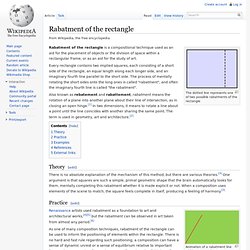

Visual Design Of A Photograph. Bridging the Gap: Classical Art Designed for Photographers. Composition (visual arts) In the visual arts—in particular painting, graphic design, photography, and sculpture—composition is the placement or arrangement of visual elements or ingredients in a work of art, as distinct from the subject of a work.

It can also be thought of as the organization of the elements of art according to the principles of art. The term composition means 'putting together,' and can apply to any work of art, from music to writing to photography, that is arranged or put together using conscious thought. In the visual arts, composition is often used interchangeably with various terms such as design, form, visual ordering, or formal structure, depending on the context. In graphic design for press and desktop publishing composition is commonly referred to as page layout. The various visual elements, known as elements of design, formal elements, or elements of art, are the vocabulary with which the visual artist composes. The elements of design are: Main article: Rule of thirds.
Attentive Equations. Rabatment as a Compositional Tool. Finding the Verticals There are many tools available to the artist to aid him.

But one needs to find the tools that really fit one’s way of working- tools that aid and intensify one’s ideas. These tools must remain what they truly are- aids that assist the artist’s creative process. One compositional method that I use pretty consistently is rabatment. It was used broadly in the 19th century by many artist out of the Paris ateliers as well as the academy.
Rabatment consists of creating a relationship between what lies within the canvas to the proportion of the sides. Rabatment consists of taking the short side of the rectangle and placing it against the long side (rotate), creating points along the edge that can be connected directly across the canvas as well as a diagonal from these points to the corners. The best demonstration I have seen for its use, I found in Charles Bouleau’s book, “The Painter’s Secret Geometry”. Rabatment of the rectangle. The dotted line represents one of two possible rabatments of the rectangle Rabatment of the rectangle is a compositional technique used as an aid for the placement of objects or the division of space within a rectangular frame, or as an aid for the study of art.

Every rectangle contains two implied squares, each consisting of a short side of the rectangle, an equal length along each longer side, and an imaginary fourth line parallel to the short side. The process of mentally rotating the short sides onto the long ones is called "rabatment", and often the imaginary fourth line is called "the rabatment". Also known as rebatement and rabattement, rabatment means the rotation of a plane into another plane about their line of intersection, as in closing an open hinge.[1] In two dimensions, it means to rotate a line about a point until the line coincides with another sharing the same point. The term is used in geometry, art and architecture.[2] Theory[edit] Practice[edit] Examples[edit]